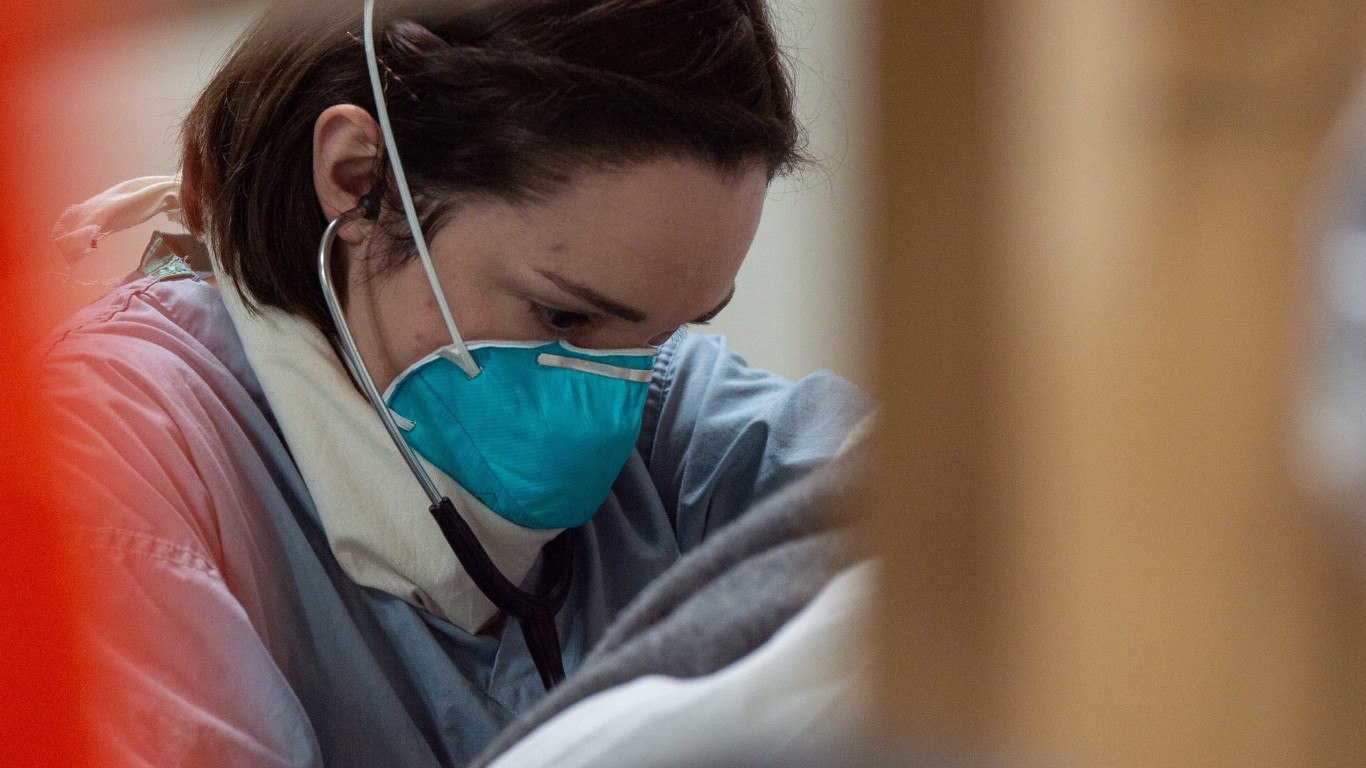Health and Healthcare
Bing COVID-19 Tracker Report 4/25/2020 (8:28 AM)

Published:

Global Cases Close In on 3 Million, Global Deaths Near 200,000. Can American Deaths Stay Below 15,000 in the Next 13 Weeks?
Total global confirmed cases have reached 2,822,003. At the current daily rate of growth, the number will pass 3 million early next week. Active cases reached 1,828,125, up by 49,954 compared to the previous day. Recovered cases reached 796,300, or 50,695 more. Global deaths reached 197,578, up 6,347 in a day, and they will pass 200,000 in a day.
Total cases in the United States have hit 927,150. Active cases were 773,435, up by 18,651. Recovered cases hit 101,315, a gain of 18,472. Deaths increased to 52,400, which is 2,028 more than the previous day.
The widely followed University of Washington’s Institute for Health Metrics and Evaluation forecast is that COVID-19 deaths in the United States will reach 67,641 on August 4. That is an increase from a forecast by the same organization of 60,308 just two weeks ago. However, with 52,400 Americans dead already, over the course of the next 13 weeks, total deaths would need to be only 15,241 for the institute’s figure to be correct. That means deaths per week would need to plummet by 1,722. It raises the issue of whether this model can possibly be accurate.
Other models appear more likely to have plausible forecasts. The Columbia University’s Mailman School of Public Health model currently indicates that, without appropriate social distancing, by mid-May new cases per day could rise to 30,000. The current daily figure is about 18,000. Additionally, MIT’s model forecasts a rise in cases per day, based on social distancing, that would trigger another rapid rise in deaths as well.
Taking into account the current death rate and ongoing increase in infections, the chance that only 15,000 people will die in the next 13 weeks is entirely implausible.
Cases in New York City numbered 150,473, which is 16% of all cases in the United States. Deaths stand at 11,544, or 22% of the nationwide figure. The number of deaths is growing so rapidly that the figure will reach 12,000 in two or three days.
New York City is the 11th largest city in the world, with a metropolitan area population of 18,819,000, based on United Nations estimates. However, none of the larger cities in the world has case or death levels close to New York’s.
Tokyo has the largest population of any city in the world at 37,400,068. It currently has 3,586 cases and only 19 reported deaths. Delhi has a population of 28,514,000, which makes it the second largest in the world. The Indian city has 2,514 cases and 53 deaths. Shanghai is the world’s third-largest city, with a population of 25,582,000. Cases counted in China’s largest city number 641, with a total of seven deaths.
There is no single way to account for why New York’s case and death levels are tremendously higher than in the world’s other largest cities. Among the explanations is that some of these cities were “locked down” very early in the spread of COVID-19. The state of emergency put in place by Japan’s government may have slowed the spread of the disease in its large cities.
Another cause of the tremendous difference in case count between New York and cities in developing nations, particularly India, is that governments outside the developed world do not have sophisticated methods to track and count cases.
Seven states have total case counts below 1,000. Each is among the smallest states by population. In most cases, they are among the largest states based on square miles. Alaska has only 339 reported cases and nine deaths. Wyoming has only 473 cases and seven deaths. In Montana, there are 444 cases and 14 deaths. Hawaii has 601 cases and 13 deaths, while North Dakota has 748 cases and 15 deaths. In Vermont, 827 cases and 44 deaths were reported. And Maine has 965 cases and 47 deaths.
None of these states has what has been termed “hot spots,” where there is a local explosion in the rate of cases reported by day. Based on that, their figures are unlikely to spike soon.
Among these states are several counties that have no reported cases at all. They are geographically at the complete opposite end of the spectrum from a huge, densely populated city like New York.
The United States has 927,150 COVID-19 cases, and that figure is rising by about 18,000 a day. Some experts believe case growth in America has peaked. However, at least one widely regarded model shows that new cases could increase to 30,000 a day. At either end of those forecasts, the date when America has a million cases is only a few days away.
Credit card companies are at war. The biggest issuers are handing out free rewards and benefits to win the best customers.
It’s possible to find cards paying unlimited 1.5%, 2%, and even more today. That’s free money for qualified borrowers, and the type of thing that would be crazy to pass up. Those rewards can add up to thousands of dollars every year in free money, and include other benefits as well.
We’ve assembled some of the best credit cards for users today. Don’t miss these offers because they won’t be this good forever.
Flywheel Publishing has partnered with CardRatings for our coverage of credit card products. Flywheel Publishing and CardRatings may receive a commission from card issuers.
Thank you for reading! Have some feedback for us?
Contact the 24/7 Wall St. editorial team.